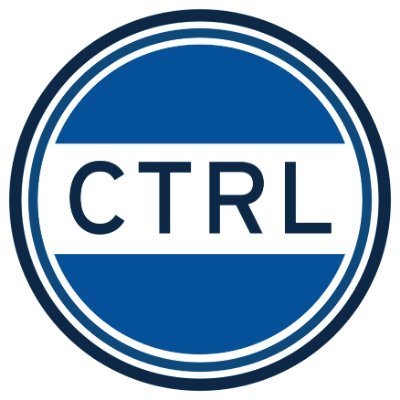Learning How to Unlock the Transformative Potential of Generative AI
By Krisztina Domjan, Ph.D.
Fall 2023
During the spring semester of 2023, I took on the challenge of experimenting with multiple Generative AI tools, tapping into my resourcefulness to understand their limitations and to find their boundaries in my courses: an essential step in effectively incorporating them into my syllabi. With the availability of generative AI and large language models (e.g., Wordtune, Quillbot, ChatGPT, Google Bard, Copy AI, and Caktus AI), life-long learning has been extended and amplified.
Is it my responsibility to contribute to this learning process by acquiring AI literacy alongside my students? Does my role in the classroom go beyond imparting subject matter-related knowledge, skills, and attitudes? As a college professor, I’m always looking for new ways to enhance my teaching and help my students become more efficient learners, so I have been critically reflecting on the role of AI towards this end.
AI Literacy and Higher Education
In 2019, Richard Culatta made this point in his keynote address at the International Society for Technology in Education (ISTE) conference, where he cited a World Economic Forum report that stated AI would lead to the loss of millions of jobs, but at the same time, create millions more new jobs and generate great revenue. Culatta emphasized that students would need to develop AI literacy to qualify for these new jobs, but unfortunately, many teachers themselves lacked the basic understanding of AI. This shortfall was a concern for companies, who recognized that teachers were the crucial link in the acquisition chain for the development of AI literacy.
Culatta urged educators to start incorporating AI into their classrooms so students could function in a world increasingly infused with AI, such as working on teams with both human and non-human members (ISTE, 2019). I was struck by his message and realized that as a professor, I needed to start taking AI seriously in my teaching. I clapped as his speech ended… I blinked…, and Chat Generative Pre-Trained Transformer (ChatGPT) arrived in a flash.
In November 2022, ChatGPT, a powerful generative AI language model, brought global awareness to the increasing prevalence of AI tools. While these more sophisticated large language models, like ChatGPT, Copy AI, and Caktus AI, remained largely unnoticed, some of my students had already been clearly utilizing popular generative AI writing tools such as Grammarly, Wordtune, and Quillbot.
I had observed my students using automated written corrective feedback tools, but it became apparent that many students were not taking the time to learn how to use them properly. This caused more work for teachers like me, who had to spend additional time correcting mistakes that the AI tools failed to address. As a result, I joined millions of other teachers in asking myself, “How can I help my students understand and use AI tools effectively? Where do I even begin?”
“I joke about it in class. I tell my students; I know you’re writing your papers with ChatGPT. But guess what, I’m grading them with ChatGPT.” (Glenn Loury, 2023)
Where to Begin: AI Literacy Strategies in the Classroom
Now what? It is impossible to teach everything about AI tools in my classes, so I ought to evolve my thinking and find a link between what the students already use, and the complimentary skills AI tools can offer. Despite understandable worries about their impact on education, I believed that it was essential to maintain a positive, asset-based message when teaching students about AI literacy.
Rather than repeating the mistakes made with social media, i.e., releasing platforms with unclear and undefined rules, basic norms and guidelines should be established before ineffective practices become ingrained. In my classroom, I am passionate about integrating technology to make learning inclusive and equitable for all students. Also, I want my students to become proficient learners with digital AI literacy skills that will benefit them now and in the future. To effectively introduce these powerful, promising tools, a clear strategy was necessary.
To begin, I experimented with Wordtune, Quillbot, ChatGPT and Google Bard, thoroughly reviewing the creators’ suggestions, FAQs, and Terms of Use, including the bits on plagiarism. During the process, it occurred to me that I, too, could use ChatGPT and Google Bard as partners in the assessment process and partners in lesson design. This was like a lightbulb moment, where all the pieces suddenly clicked together, and I realized the potential of the technology. It felt like I had unlocked a whole new world of possibilities.
I surveyed my students at the beginning of the Spring semester and found that they have the most experience with older, basic options, and tend to rely on themselves when figuring out these programs. However, they were unsure about the potential of these tools and were not learning about the affordances of these apps from their teachers. They also were unsure of what was considered acceptable or tolerated or what counted as academic dishonesty, something that instructors need to clarify for their students in the context of their course.
To address this issue, in all my Spring courses, we read the FAQs, Terms of Use, and Syllabus addendum together. I tweaked existing assignments to ensure that there was proper guidance. My driving question was, “What corners would I cut if I were a student?” I wanted them to understand that AI literacy meant to gain a set of competencies including critical evaluation of AI technologies, clever prompting, and effective collaboration with AI. The students showed a willingness to engage meaningfully and think critically about the suggestions provided by the AI tools.
Transformative Potential of AI in the Classroom
At the end of the semester, I surveyed my students about their overall experience. Although the full analysis of their feedback is still underway, preliminary results suggest that they realize AI is collaborative (they can actively engage with users, allowing for a dynamic exchange of information and ideas) and shortcuts don’t work.
Incorporating AI into the curriculum and my work routine requires a thoughtful and intentional approach. By establishing basic rules and guidelines, tweaking existing assignments, and collaborating with our students, we can ensure that they gain the necessary skills to function in a world infused with AI.
For my fellow educators who may still have doubts, I have a playful message inspired by a popular movie (click on the link to view it): “I mean what if I don’t want to live the way you live? Oh, don’t be ridiculous Andrea, everybody wants this.”
References
Culatta, R. [ISTE]. (2019. Aug 08). Artificial Intelligence, Education, and Our Two Possible Futures. [Video]. YouTube. https://youtu.be/rSDxkZCcsaU
Loury, G. [Real Time with Bill Maher]. (2023, Apr 22). Overtime: Esther Perel, Glenn Loury and Daniel Bessner | Real Time (HBO). [Video]. YouTube. https://youtu.be/n6_zaY72Z-E
Prime Video. [@primevideo]. (n.d.). Don’t be ridiculous. [Video]. TikTok. https://www.tiktok.com/@primevideo/video/7187203235831352622?is_from_webapp=1&sender_device=pc&web_id=7227661880428889646
Author Profile
In her work, Krisztina advocates for establishing inclusive pedagogy through the use of technological tools in education. In order to enhance the learning experience, inclusion, and student retention, she supports lifelong learning, innovative teaching practices, continuous fieldwork, and qualitative research. She teaches Complex Problems, Intercultural Understanding, and Academic Writing Skills courses.



